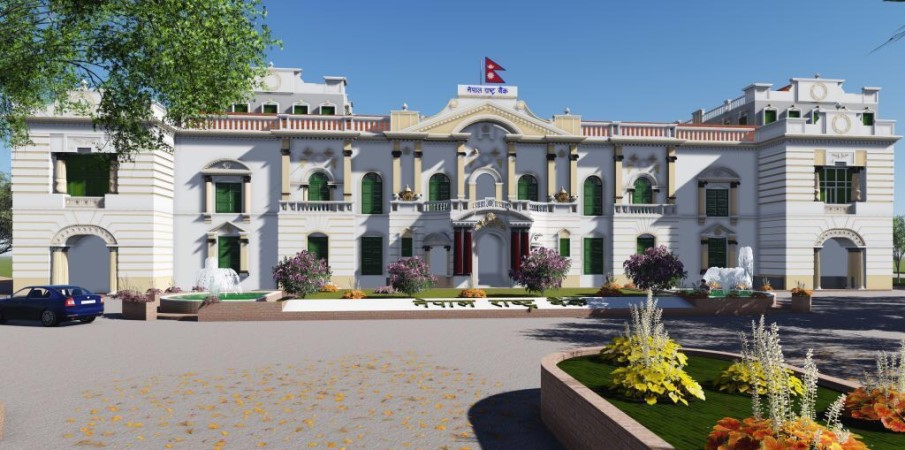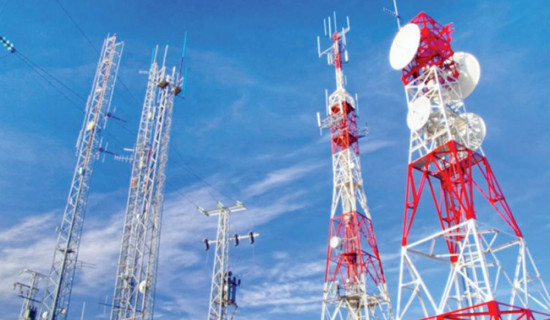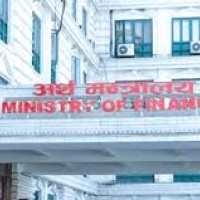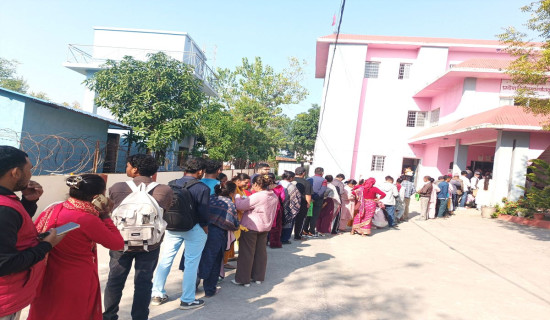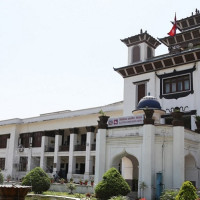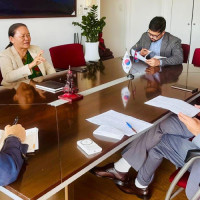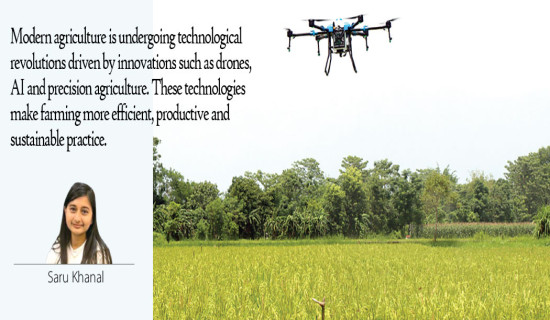- Friday, 14 November 2025
Economy shows signs of recovery
By Laxman Kafle,Kathmandu, Feb. 7: Signs of improvement in foreign currency reserves, balance of payment, current account and remittance inflows have been noticed in the national economy.
The macroeconomic and financial report of the first six months of the current fiscal year made public by Nepal Rastra Bank on Monday showed that foreign exchange reserves and balance of payment continued to improve even after the government lifted the ban imposed on the import of luxurious goods.
The government had lifted the ban on expensive mobiles, motorcycles, liquors, vehicles and television sets in mid-December 2022.
After the foreign currency reserves went down and the balance of payment and current account showed deficit, the government had adopted import control measures in April last year, imposing a ban on the imports of various luxurious goods.
According to the report, gross foreign exchange reserves increased by 10 per cent to Rs. 1,337.29 billion in mid-January 2023 from Rs. 1,215.80 billion in mid-July 2022.
Gross foreign exchange reserve was Rs. 1,292.56 billion in mid-December 2022. In the US dollar terms, the gross foreign exchange reserves increased by 8 per cent to 10.30 billion in mid-January 2023 from 9.54 billion in mid-July 2022.
Of the total foreign exchange reserves, reserves held by NRB increased by 12 per cent to Rs. 1183.37 billion in mid-January 2023 from Rs. 1056.39 billion in mid-July 2022.
Reserves held by banks and financial institutions (except NRB) decreased by 3.4 per cent to Rs. 153.91 billion in mid-January 2023 from Rs. 159.41 billion in mid-July 2022, said the report.
The share of Indian currency in total reserves stood at 23.6 per cent in mid-January 2023.
Based on the imports of six months of 2022/23, the foreign exchange reserves of the banking sector are sufficient to cover the prospective merchandise imports of 10.4 months, and merchandise and services imports of 9.1 months, said the report.
Current account deficit improves, BoP records surplus
Meanwhile, the current account remained at a deficit of Rs. 29.47 billion in the review period compared to a deficit of Rs. 352.16 billion in the same period of the previous year.
In US dollar terms, the current account registered a deficit of 233.3 million in the review period compared to the deficit of 2.95 billion in the same period last year.
In the review period, capital transfer decreased by 19.1 per cent to Rs. 4.43 billion and net foreign direct investment (FDI) remained Rs. 749.4 million. In the same period of the previous year, capital transfer and net FDI amounted to Rs. 5.48 billion and Rs.11.34 billion respectively.
Likewise, balance of payments (BoP) remained at a surplus of Rs. 97.10 billion in the review period compared to a deficit of Rs. 241.23 billion in the same period of the previous year.
In the US dollar terms, the BoP remained at a surplus of 734.4 million in the review period against a deficit of 2.02 billion in the same period of the previous year.
Remittance jumps by 24 %
Remittance inflows increased by 24.3 per cent to Rs. 585.08 billion in the review period against a decrease of 5 per cent in the same period of the previous year.
In the US dollar terms, remittance
inflows increased 13.9 per cent to 4.50 billion in the review period against a decrease of 5.7 per cent in the same period of the previous year.
In the month of Poush alone, around Rs. 104.58 billion of remittances were received.
Number of Nepali workers (institutional and individual-new) taking approval for foreign employment increased by 64.6 per cent to 275,643 in the review period, said the NRB.
The number of Nepali workers (renew entry) taking approval for foreign employment increased by 9.5 per cent to 142,548 in the review period.
It had increased 298.1 per cent in the same period of the previous year.
Net transfer increased by 22.7 per cent to Rs. 644.72 billion in the review period. Such a transfer had decreased by 4.4 per cent in the same period of the previous year.
Inflation remains at 7.26 %
In the meantime, the consumer price inflation has increased significantly in the first six months of the current fiscal year.
The y-o-y consumer price inflation stood at 7.26 per cent in the sixth months (mid-January) of the current fiscal year 2022/23 compared to 5.65 per cent a year ago.
However, inflation hit 7.38 per cent in mid-December, 8.50 in mid-October and 8.08 per cent in mid-November 2022.
The budget of the government for 2022/23 and monetary policy has set the goal of keeping inflation within 7 per cent.
Food and beverage inflation stood at 5.62 per cent whereas non-food and service inflation rose to 8.57 per cent in the review period, according to the macroeconomic and financial report published by Nepal Rastra Bank (NRB) Monday.
Under the food and beverage category, y-o-y consumer price index of restaurant and hotel sub-category increased by 15.56 per cent, tobacco products by 11.81 per cent, milk products and eggs by 9.70 per cent, cereal grains and their products by 9.56 per cent and alcoholic drinks by 8.84 per cent during the review period.
Likewise, under the non-food and services category, the price index of transportation sub-category increased by 16.43 per cent, health by 11.22 per cent, recreation and culture by 8.76 per cent, miscellaneous goods and services by 8.68 per cent and furnishing and household equipment by 8.33 per cent.
In the review month, consumer price inflation in the Kathmandu Valley, Terai, Hill and Mountain surged to 6.93 per cent, 7.49 per cent, 7.30 per cent and 6.69 per cent respectively, said the report.
Inflation in these regions were 5.28 per cent, 6.15 per cent, 5.34 per cent and 5.22 per cent respectively a year ago.
The y-o-y wholesale price inflation increased by 9.82 per cent in the review month compared to 8.08 per cent a year ago.
The y-o-y wholesale price of consumption goods, intermediate goods and capital goods increased by 4.47 per cent, 13.80 per cent and 4.50 per cent respectively.
The wholesale price of construction materials increased by 10.67 per cent in the review month.
The y-o-y salary and wage rate index increased by 10.27 per cent in the review month. Such growth rate was 5.77 per cent a year ago.
In the review month, salary index and wage rate index increased by 12.39 per cent and 9.64 per cent, respectively.
Revenue deficit
However, the country has faced deficit in revenue mobilization for the first time this fiscal year. The revenue collection of the government stood at Rs. 488.49 billion while recurrent expenditure stood at Rs. 505.87 billion by February 5, 2023.
The government collected revenue of Rs. 488.49 billion in about seven months (by February, 5, 2023) of the current fiscal year. This is only 34.81 per cent of the target of Rs. 1,403.14 billion.
Around Rs. 439.5 billion has been raised from tax revenue and Rs. 48.98 billion from non-tax revenue.
There is challenge in the economy as the government has been unable to collect revenue as per the target. In face of poor performance in revenue mobilisation, the present government has already adopted measures to cut unnecessary expenditures.
Similarly, the pace of spending capital budget is slow as the government has spent only 16.5 per cent of the total allocation by February, 5, 2023.
The government so far spent capital budget of Rs. 62.75 billion of total allocation of Rs. 380.3 billion.

